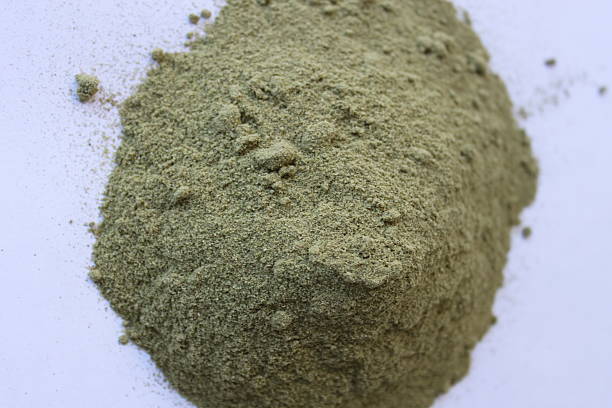
1.Wendisch VF, Mindt M, Pérez-García F. 2018. Di-arginine Malate API suppliers, manufacturing of mono-and diamines utilizing micro organism: current progress, purposes, and perspectives. Diamines are plentiful in nature and play an necessary role within the physiology of many organisms (1). For example, diamines are used as phytohormones in plants, as stabilizers for a lot of anionic substances, similar to DNA and phospholipids as a consequence of their cationic properties, and as modulators of various transport ion channels (2). Some research have proposed that diamines may be vital parts of cell membranes in Gram-adverse bacteria during which they regulate pH homeostasis of the cell (3, 4), and they might even be associated to cell differentiation as signaling factors (5). In industry, diamines are platform chemicals with vital applications. The following Pharmaceutical Products are supplied: PLEASE SEE Links AT The bottom. Furthermore, with the proposed banning of disposable plastic products by the European Commission, the development of bio-based mostly plastics is turning into more and more urgent (10). The event of diamine biosynthesis expertise will effectively accelerate the development of bio-primarily based polyamides. G and butA. Furthermore, King et al. Based on the substitute of fabG, butA and NCgl2053 had been deleted in flip, and it was discovered that solely the deletion of butA was efficient, which increased the manufacturing of putrescine to about 31.1 mM.

Recently, excessive-efficiency microbial factories, reminiscent of Escherichia coli and Corynebacterium glutamicum, have been widely used in the manufacturing of diamines. Finally, bio-based diamines nonetheless lack financial competitiveness towards diamines ready by chemical synthesis. Simultaneously, pycA (encoding the most important anaplerotic enzyme catalyzing the synthesis of oxaloacetate) was modified by introduction of a beneficial level mutation, P458S, and the expression of this mutant was amplified by replacing native promoter with the robust sod promoter. First, the ldcC gene (encoding lysine decarboxylase) from E. coli was overexpressed to catalyze the conversion of lysine into 1,5-diaminopentane. Then, the genes encoding aspartokinase (lysC311), dihydrodipicolinate reductase (dapB), diaminopimelate dehydrogenase (ddh), and diaminopimelate decarboxylase (lysA) were overexpressed, which had been associated to nearly all enzymes of the biosynthetic route, and the flux of the competing threonine pathway was weakened by utilizing the leaky mutation hom59. 54) carried out strategies, corresponding to promoter optimization, permeabilized cell therapy, and the substrate and cell focus optimization, to improve the titer of 1,5-diaminopentane. First, the price of the inducer was effectively diminished by using the cad promoter induced by l-lysine to overexpress the cadA gene as a result of this inducer is less expensive than isopropyl-β-d-thiogalactopyranoside (IPTG) and is used as a substrate for conversion to 1,5-diaminopentane. Then, the cell permeability was enhanced by destroying the structure of the cell membrane phospholipid utilizing ethanol, which facilitated the entry of the substrate and the release of the product.
Then, based mostly on the synthetic small RNA (sRNA) screening and genetic necessity evaluation, pfkA was selected as a gene knockout goal. Initially, so as to increase the flux to 1,5-diaminopentane, the hom gene (encoding the important thing enzyme l-homoserine dehydrogenase) getting into the aggressive threonine pathway was replaced with the cadA gene from E. coli primarily based on C. glutamicum ATCC 13032, which produced 1,5-diaminopentane with a titer of 2.6 g/liter (44). Similarly, the genes of E. coli CadA and Streptococcus bovis 148 α-amylase (AmyA) had been coexpressed in the pressure deleted the hom gene based mostly on C. glutamicum ATCC 13032. 1,5-Diaminopentane was successfully produced from soluble starch with a titer of 49.Four mM (∼5.1 g/liter) (45). Moreover, the 1,5-diaminopentane manufacturing pressure was engineered based mostly on C. glutamicum ATCC 13032 lysC311 for sustaining a adequate lysine precursor. Within the C5 pathway, with α-ketoglutarate as the 5-carbon skeleton, 1 carbon is eliminated to type the 4-carbon putrescine, after which the putrescine is further used in the synthesis of 1,3-diaminopropane. This information present the important thing roles of oxaloacetate and α-ketoglutarate within the synthesis of diamines. The evaluation found that, within the C4 pathway, the catalytic strategy of Dat and Ddc, the key enzymes for the synthesis of 1,3-diaminopropane, didn't require the participation of any cofactors, whereas within the C5 pathway, the catalysis of the limiting enzyme spermidine synthase (SpeE) requires S-adenosyl-3-methylthiopropylamine as a cofactor, which was the primary cause for the low effectivity of the C5 pathway.
Based on the reported synthesis pathways of diamines, the stoichiometric equations of 1,3-diaminopropane, putrescine, and 1,5-diaminopentane have been obtained (Table 2) (14-17). The C4 pathway of 1,3-diaminopropane solely requires the participation of 1 mol glucose, four mol NH3, four mol NADH, and a pair of mol ATP. Currently, the biosynthetic pathways of frequent diamines (1,3-diaminopropane, putrescine, and 1,5-diaminopentane) have been recognized in varied microorganisms (14-17). Based on the supply of the carbon skeleton, diamine biosynthetic pathways could be divided into the C4 pathway (Fig. 1) and C5 pathway (Fig. 2); the C4 pathway is used for the synthesis of 1,3-diaminopropane in Acinetobacter sp. At present, most diamines are produced by chemical refining methods based mostly on nonrenewable petroleum sources (8, 9). As rising attention has been paid to resource depletion, climate change, environmental pollution, and sustainable growth issues, the biological production of diamines from renewable raw materials has develop into a extra most popular various route for attaining sustainable improvement of the financial system and setting. Diamines are a class of cationic molecules consisting of a saturated carbon spine and two amine groups (1). Examples include 1,3-diaminopropane, 1,4-diaminobutane (putrescine), 1,5-diaminopentane (cadaverine), 1,6-diaminohexane (hexamethylenediamine), and different long-chain diamines with carbon skeletons of differing size.
